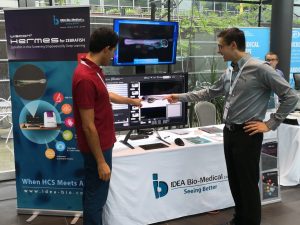Zebrafish screening has rapidly grown into a pivotal instrument in novel therapeutic discovery. This ascent can be attributed to its multifaceted advantages, including its adaptability, economic viability, and its proficiency in probing the roles of small-molecule compounds. As an in vivo vertebrate system, zebrafish has been instrumental in modeling human cardiovascular diseases and has carved a niche in in vivo cardiovascular drug discovery[2].

Zebrafish Screening: Bridging the Gap Between In Vitro and In Vivo Studies
The dichotomy between in vitro and in vivo studies has long posed challenges in drug discovery and development. Zebrafish screening seamlessly bridges this gap. The physiological similarity between zebrafish and humans allows for a more accurate representation of how potential therapeutics might behave in human systems. This congruence is particularly evident in cancer biology, where zebrafish models have illuminated pathways and mechanisms congruent with human pathologies.
High Throughput Screening: Accelerating Drug Development
One of the most salient features of zebrafish screening is its compatibility with high-throughput screening. The ability to assess large numbers of compounds in a relatively short time frame is invaluable in the drug development process. The zebrafish embryo, in particular, offers a unique platform for such microscopy based screens. Its transparency allows for real-time observation of drug effects, making it an ideal candidate for high-throughput assays.
Zebrafish in Disease Modeling: A Paradigm Shift
Beyond drug discovery, zebrafish screening has been pivotal in disease modeling. The recent development of a rapid demyelination/remyelination zebrafish model is a testament to its versatility[3]. Such models are instrumental in the high throughput screening of compounds that might promote remyelination in ailments like multiple sclerosis.
Small Molecules and Cell Therapies: The Zebrafish Advantage
Zebrafish screening is not limited to small molecules alone. It is a promising tool in the realm of cell therapies too. Zebrafish and humans share similar physiology. In vivo studies can exploit this mammalian-like central nervous system to evaluate the potential of novel cell therapies.
The Future of Zebrafish Screening in Therapeutic Discovery
The trajectory of zebrafish screening in drug discovery and development is undeniably upward. Its ability to expedite the transition from drug discovery to clinical application is unparalleled. Furthermore, it holds the promise of ushering in an era of personalized therapeutic options tailored to individual patient needs.
As the potential of zebrafish screening continues to unfold, there is a pressing need for advanced tools to further enhance its capabilities. IDEA Bio-Medical’s Hermes high content imaging system accompanied by Athena deep learning-based image analysis solution for in vivo zebrafish screening stands at the forefront of this technological revolution. This state-of-the-art solution promises to redefine what’s possible in zebrafish screening, offering a glimpse into the future of novel therapeutic discovery.
Harness the power of zebrafish screening with IDEA Bio-Medical’s cutting-edge solution. Dive deeper into the future of therapeutic discovery.
References
1. Chapela D, Sousa S, Martins I, Cristóvão AM, Pinto P, Corte-Real S, Saúde L. A zebrafish drug screening platform boosts the discovery of novel therapeutics for spinal cord injury in mammals. Sci Rep. 2019 Jul 19;9(1):10475. doi: 10.1038/s41598-019-47006-w. Erratum in: Sci Rep. 2020 Jan 15;10(1):749. PMID: 31324865; PMCID: PMC6642202.
2. Keßler M, Rottbauer W, Just S. Recent progress in the use of zebrafish for novel cardiac drug discovery. Expert Opin Drug Discov. 2015;10(11):1231-41. doi: 10.1517/17460441.2015.1078788. Epub 2015 Aug 18. PMID: 26294375.
3. McGown, A., Ramesh, T.M., & Sharrack, B. (2016). The Development of a Novel Zebrafish Model of Demyelination Allowing Therapeutic Development to Promote Remyelination in Multiple Sclerosis (I10.003). Neurology, 86.

What’s next for Zebrafish microscopy in 2023
News: What’s next for Zebrafish microscopy in 2023? Dr. Jason Otterstrom talks about the benefits and challenges of using Zebrafish as an emerging model for

Athena Zfish software- Installer
Time to Elevate Your Research with Athena Zebrafish Software! Dashboard | Technical overview | Pricing Our new, first-of-its-kind analysis software for automated analysis of Zebrafish microscopy images offers simple

Zebrafish: A Preclinical Model for Drug Screening
Zebrafish: A Preclinical Model for Drug Screening Download Software Preclinical models play a fundamental role in the drug discovery pipeline, enabling researchers to identify compounds

White Paper: Advancing Therapeutics for Kaposiform Lymphangiomatosis (KLA) with High-Throughput Zebrafish Models
Explore groundbreaking Kaposiform Lymphangiomatosis (KLA) research using zebrafish models. The Yaniv Lab leverages IDEA Bio-Medical’s Hermes microscope and Athena software for high-throughput drug screening, identifying promising treatments like Cabozantinib and GSK690693 for this rare lymphatic disorder.
